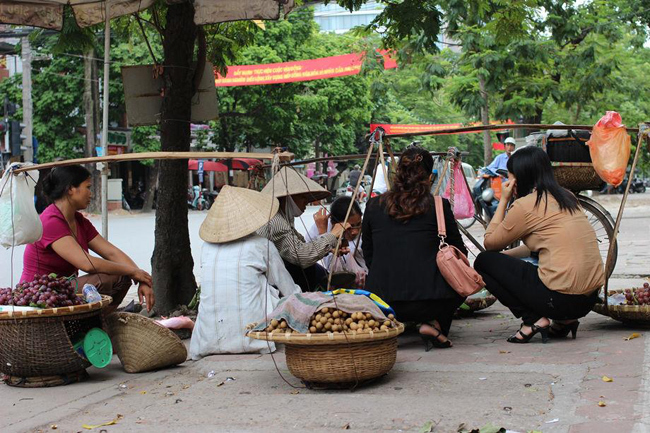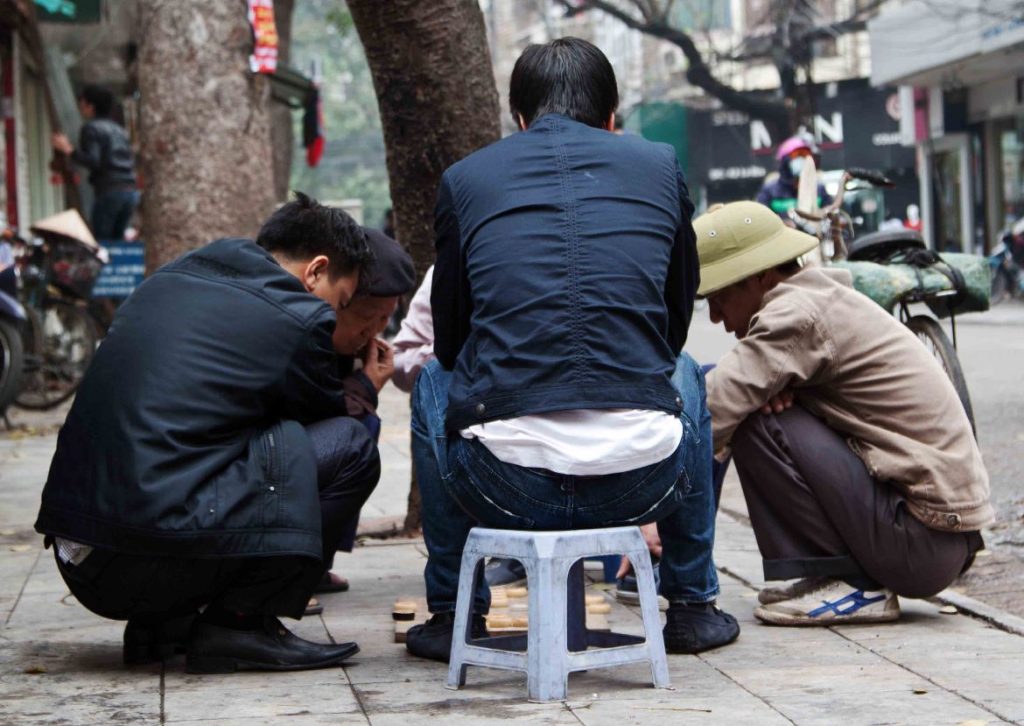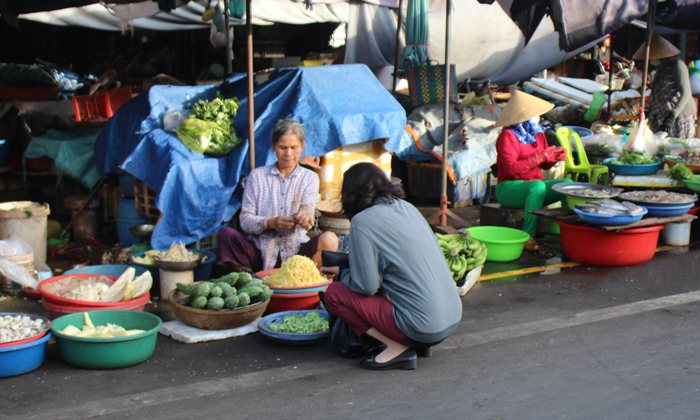In the eyes of the Europeans, Asian squat is still a characteristic in culture, but people are slowly saying goodbye to squatting.

Asian nations are known for squatting. As a result, you will see a lot of photographs of squatting when visiting Vietnam. Many people jokingly assert that the Vietnamese are the world’s most active yoga practitioners because they master the Asian squat.
The Asian squat is a sitting position that has the knees bent, the buttocks lowered almost to the floor, and the feet and heels flat on the floor.
In recent years, the Asian squat has drawn a lot of attention, but more recently, it has come to light that this sitting position may have health advantages.
Simple is the squat itself. You crouch down with your butt touching your ankles, knees slightly apart, and both feet flat on the ground. Although it is simple in theory, most people find it to be impossible in practice.
This squat is generally thought to be a hereditary trait that is passed down via families.

How did the suqatting culture stars?
Numerous meteorological, behavior, and physical aspects contribute to the development of the Asian squat. Basic characteristics are as follows:
At recess, some children perform an Asian squat.
Vietnamdrive plus It is because of the hot, humid weather and heavy rains that have saturated the surroundings. In order to prevent getting wet during the rainy season, people squat everywhere. While the weather is hot, squatting will help you feel cooler.

The agricultural culture is where the Asian squat first appeared. People simply squat to relax in the wet, weed-filled field because the farmers are unable to bring chairs to work in the rice fields.
Squatting is a part of the talking culture and neighborhood. In a few minutes, many individuals can converse freely, and they sit down next to the roadway to do so. When they don’t have an appointment or on the way to work, they get together. It is therefore convenient to squat to say a few lines since they are unable to prepare or go to a location with a decent seat.
While doing her market shopping, a woman squats. I enjoy Vietnam Backstreet Tours + Squatting behaviors are also influenced by the Vietnamese market culture. Customers cannot sit down at the market itself, which is typically made of dirt in rural areas and brick in cities but is unclean. When a lot of people visit the market, they also want to converse while alone squatting.

The ability to squat is a biological trait of humans. Most Asians can perform the Asian squat with ease since many experts have discovered that the Asian ankle can bend over 70 degrees. Most Europeans and Americans have ankle joints that are just 30 degrees flexible, so they frequently have to stand on tiptoes when attempting to sit down. A squat ability is also produced through working culture.
Vietnamese people assume that the man who fixes bikes on the corner has no passengers since they see him sitting on the chair. Even though there is a small chair next to the basket, food vendors just sit on a chair to finish or count money. Squatting is convenient for workers and healthy for the mind. The squat could develop during combat. Since the sitting posture can be quickly changed to a standing one to run in emergency situations, squatting is undoubtedly the skill of unstable lands. Vietnam also saw a number of bloody battles, which may have contributed to the development of the Asian squatting habit.
For many traditional Vietnamese games, kids frequently play on the ground in rural areas. They can play and move about freely thanks to the flexibility of the Asian squat. Therefore, the majority of kids in Vietnam can squat naturally.
Where should I squat when shouldn’t I squat?

Squatting is widespread throughout Vietnam, with the majority of instances still occurring in rural regions.
It’s not merely a way to rest when you squat. Squatting is a need for many vocations, including those requiring workers to sift rice, wrap pastries, clean Vietnamese vegetables, tend to rural agriculture, fix bicycles, and operate street vendors in urban areas.

- Many locations, particularly in small towns and rural areas, still have squatting pedestals for toilet usage.
- Playing on the streets, many kids still have to stoop to hit balls, play slots, etc. since the sitting posture is quite mobile.
- European pedestals that resemble the ground have only lately begun to appear.
However, the Asian squat is becoming increasingly difficult to locate due to social traits and the growth of cognitive life.
To reflect Vietnamese culture’s civilized values, people should also refrain from squatting in the situations listed below.
Squatting is inappropriate in congested public spaces. Additionally, since prolonged sitting is bad for digestion, less and fewer people eat while squatting. Avoid squatting when addressing important visitors. It would be impolite to chat while squatting at such time.
- As a sign of respect, speakers should take a seat or stand when speaking to strangers.
Why Asian squat is inappropriate when visiting upscale establishments like as hotels, restaurants, and stores in Vietnam. - In Vietnam, squatting is not permitted while a woman is wearing a dress or Ao dai.

Advantages and disadvantages of squatting
Many people’s go-to sitting position is the Asian squat. Squatting is a controversial exercise since it both has health benefits and risks for your bones and joints.
Advantages to squatting:
According to the study’s findings, squatting won’t increase body size but will reduce belly fat.
When the glutes, abdomen, and thighs are squeezed during an Asian squat, the process of blood circulation to the heart improves and moves more quickly.
Squatting facilitates easy secretion, helps the body properly detoxify, and benefits the digestive system (although not for an extended period of time).
According to some recent research, the Asian squat can increase physical strength, lower the risk of high blood pressure, and lower cholesterol.
The body’s muscles contract vigorously when someone is squatting, almost 40% more than they do when someone is walking. This helps the person squatting maintain a healthy body.
Damage caused by squatting
Some people think that because the knee and kneecap bear the majority of the bodyweight during squatting, these joints are impacted.
The people will have numb legs if the squatting takes a long time. They will feel lightheaded when they stand up.
Long Asian squats can also cause back pain in certain persons.
According to certain perspectives, pregnant women shouldn’t squat for an extended period of time because it can result in stomach cramps and abdominal pain.
The body’s force on the knee, muscles, and femur increases 7-8 times when squatting.
Walking only supports half of your body weight, and the impact on your knees when climbing stairs is 3 to 4 times more than it is when you are standing.
squat technique for the house
For those who frequently perform the Asian squat, it will have favorable effects if done correctly and for a brief period of time. As a result, many yoga practitioners engage in the squatting exercise.
Being Vietnamese, we are quite comfortable with this position and will demonstrate both beginner and advanced squat techniques for you. These classes are also used as reference materials, though. Prior to exercising, you should speak with your doctor if you have any bone, back, or other health issues.
Beginner’s exercise for the Asian squat:
Five minutes are required.
If you’ve never performed an Asian squat before, you should start gently and carefully using the instructions below.
- Get ready to work on the Asian squat
Select a spot that is at or slightly below your waist height and has an excellent hold, such as a window. - Get a suitable standing position
You are standing beside or opposite the handle. One or two hands hold the handle.
(Hold one hand while standing on the side). - Extend your feet
Extend your feet the shoulder-width apa larger than your shoulder. - Kneel down
As you slowly sit down, make sure your hand is always on the handle to help ease the strain on your legs and enable easy sitting. Do not jump onto a chair! - Remaining in place for 10 to 15 seconds
Once your knees are fully bent, you hold this position for 10 to 15 seconds. Please maintain your heels on the ground and keep your buttocks close to the ground but not touching it. - Get up
You’ll gently get to your feet. It’s a little challenging for newcomers. To support your body, pull hard with your hand. In the meantime, you support yourself by standing up using the power in your thigh and knee muscles.
Start at 3 times
Practice starting at 3 times, then gradually increasing the number of times of squatting per day. Then, get rid of the handle gradually.
If you squat and get up comfortably without a handle, then you are successful.
Advanced Asian squat exercise:
Advanced skills to practice squat are more difficult because you do nearly the Asian half squat.

- To begin the Asian squat exercise to strengthen your thighs, buttocks, and knees, choose an open, airy, flat stance. This one is one that many women enjoy using.
- Keep feet shoulder-width apart.
- Hands move forward, parallel to the ground, and eyes straight.
- Slowly sit down, and your hands still parallel to the ground. When you lower your body, try to keep your back as straight as possible.
- You don’t fully bend the knee, but keep it slightly open. The distance from the heel to the buttocks is 15 – 20 cm.
- Hold this position for 20 -30 seconds.
- Slowly stand up. Keep your arms still, and try to keep your back straight.
- Do this 10 to 15 a day, and you will see many
effects.
Now is your turn! Practice the Asia squat properly for good results. Good luck!
Do you like the way of Asian squat?
If the post is helpful, please encourage us by sharing it with your friends! Thanks!




